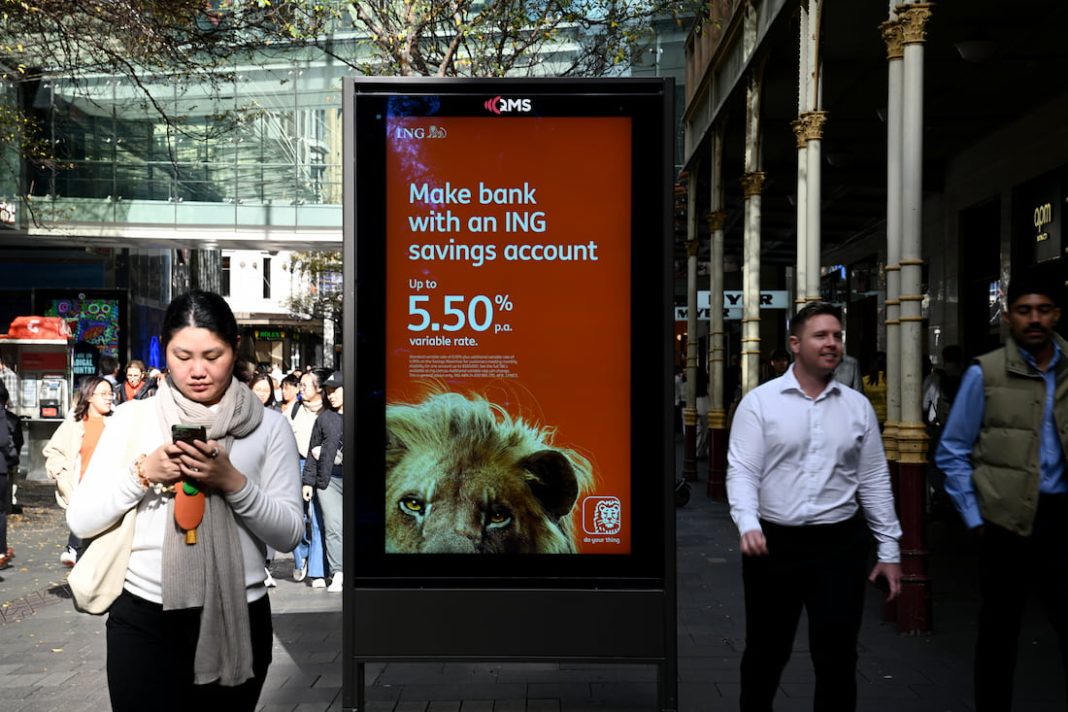Eagerly-awaited quarterly inflation numbers will be make or break for the next cash rate meeting, with economists warning a strong outcome could tip the Reserve Bank of Australia into hike mode.
The final mile to bring inflation back to the central bank’s two to three per cent target band has proved challenging, with the pace of consumer price growth moving in the wrong direction based on the official monthly measure.
The troubling run of monthly data has ratcheted up the focus on the more comprehensive June quarter number due from the Australian Bureau of Statistics on Wednesday.
All four of the big banks were forecasting a trimmed mean number – the RBA’s preferred measure of underlying inflation – above the central bank’s predictions.
Back in May, the RBA forecasted the trimmed mean easing to 3.8 per cent from four per cent in March.
It expected the headline mean to lift to 3.8 per cent in June, up from 3.6 per cent in March.
Even though ANZ expects both the headline and trimmed mean to print above RBA expectation at 3.9 per cent, senior economist at the bank Catherine Birch said such a result should not be enough to trigger another hike.
Like the rest of the big banks, ANZ’s base case is for no more hikes and rates staying on hold for a while.
“But we acknowledge a strong consumer price index print would raise the risk of the RBA hiking in August, particularly if its staff revise up the outlook for economic activity and the labour market,” she wrote in a note.
The risks to the call appeared “slightly skewed to the upside”, she said.
Higher shipping costs could potentially push up tradable inflation, although the improvement in the Australian dollar’s trade-weighted index could serve as an offset.
Economists from Deloitte Access Economics, State Street Global Advisors and elsewhere have warned against further increases to the cash rate in an economy barely growing and with unemployment ticking higher.
Others such as Judo Bank’s Warren Hogan, Coolabah Capital’s Christopher Joye and the Australian National University’s Steven Hamilton maintain the RBA has underdone its tightening cycle, pointing to sticky inflation and persistently strong employment.
Retail sales data will also be of interest ahead of the August 5-6 interest rate meeting, also slated for release by the statistics bureau on Wednesday.
The pace of home price growth also has implications for inflation as rising asset prices can encourage more spending, putting CoreLogic’s July dwelling value index in the spotlight when it is unveiled on Thursday.
Other ABS data of interest includes building approvals figures for June on Tuesday, international goods trade statistics on Thursday and the producer price index and lending indicators on Friday.
Wall Street meanwhile closed with strong gains on Friday, with small-cap stocks again among the best performers in a market continuing a rotation into undervalued names.
The Dow Jones Industrial Average rose 654.27 points, or 1.64 per cent, to 40,589.34, the S&P 500 gained 59.88 points, or 1.11 per cent, to 5,459.10 and the Nasdaq Composite gained 176.16 points, or 1.03 per cent, to 17,357.88.
Australian futures rose 60 points, or 0.76 per cent, to 9039.
The S&P/ASX 200 index was up 60.1 points, or 0.8 per cent, to 7,921.3 at Friday’s close, with the broader All Ordinaries up 59.1 points, or 0.7 per cent, to 8,153.4.
By Poppy Johnston in Canberra



